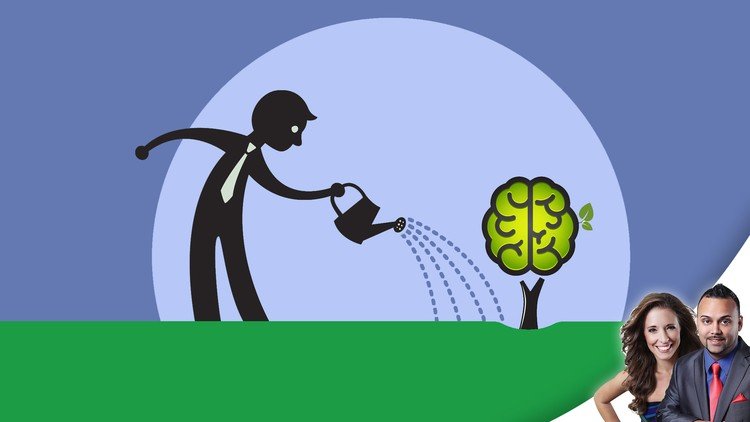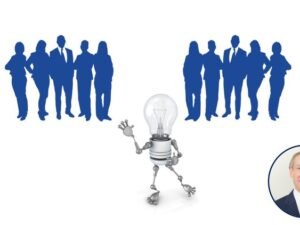Leadership: Growth Mindset for Leadership and Organizations
- Description
- Curriculum
- FAQ
- Reviews

+++++++++++++++++++++++++++++++++++++++++++++++
We are top Udemy instructors in the personal development category. Our courses have been taken by over 700,000+ happy students from 200 countries.
We have a thriving community in the course and we are actively involved and answer questions within 24h.
+++++++++++++++++++++++++++++++++++++++++++++++
Whether you…
-
Run your own business
-
Have a management position
-
Are an executive in a Fortune 500 company
-
Aspire to lead in any of these ways
…there are certain qualities and capabilities you need in order to succeed as a leader.
Every skill imaginable is available at your fingertips—all you have to do is download an app, enroll in an online course, read a book, or hire a coach. If everything you need to learn to be a great leader is out there, available to everyone, why, then are some leaders—and the organizations they run—so much more successful than others?
Would your answer be:
-
Because some leaders put more time and effort into learning the necessary skills
-
Because some leaders are just more naturally talented than others
Your answer to THIS question is the greatest predictor of your future success as a leader—not your degrees, experience, innate abilities, personality, current position or how many of the top qualities great leaders have that you already possess.
Whether you believe your success as a leader depends on you being more talented than others or you believe your success as a leader depends on your willingness to learn and develop the needed skills—this distinction is what determines EVERYTHING.
In our society, and especially in the hierarchical structure in the corporate world, there is a prevailing belief that some people are simply smarter or more talented than others and that this difference is what accounts for a person’s success or failure. However, in industries like sports where natural talent is highly coveted, over and over again the athletes who initially showed lower levels of raw talent are the ones who come out on top.
Let us tell you a little story…
In a famous example, Michael Jordan—the most revered basketball player of all times—was cut from his high school basketball team. Other players may have had more natural ability, but Michael surpassed them all. Why? Because he out-worked every single one of them. He developed his abilities, whereas the players who though they were already talented and didn’t have to try so hard, didn’t.
But it wasn’t the hours of extra time Michael put into practicing every day that allowed him to, literally, leap above his competitors. What enabled him to become the best in history was his belief system—his mindset—the belief that he was CAPABLE of improving his ability.
It’s not a person’s talent that makes them successful—it’s the belief that they can IMPROVE—and then the action they take to do so.
What the most successful leaders have that others don’t is a GROWTH MINDSET. They believe that they will become the best leaders they can be through EFFORT, LEARNING, and GROWTH. They believe they, and everyone they work with, are capable of improving. Without this underlying belief, they will not put the time and effort into learning those needed skills because, well, why bother? You either have the talent and intelligence to be a leader or you don’t, right?
This course was created to help you identify the differences between a fixed mindset leader and a growth mindset leader so that you can become the latter.
This course will help you develop a growth mindset, starting with the good news that regardless of what you previously thought, the truth is that your talent and intelligence is not fixed—you can develop your abilities in any area.
Then, you can take what you learn and teach the growth mindset to your staff. And because you believe in the human potential to learn and grow you can coach employees to reach their potential. The result is that your employees will improve and your teams, projects, or department will thrive.
Lastly, you’ll learn how growth mindset organizations operate differently, why they outperform and outlast fixed mindset organizations, and how you can take make these changes in your organization.
And, you’ll receive a proven blueprint for setting growth-oriented goals so that you can implement the exciting new strategies you learn for developing yourself as a leader and inspiring your staff and organization to embrace their potential.
So, are you ready to transform your life, career, and business? If so enroll now, we look forward to seeing you in the course!
Guarantee: We know you will love this course. However, we offer a no-questions-asked 30-day money-back guarantee if the course does not meet your needs for any reason.
So, who are we?
We are Joeel & Natalie Rivera. We own a digital media publishing company called Transformation Services, Inc. We provide training programs and curriculum development for entrepreneurs and small businesses and have been coaching for over a decade. We’ve worked with 300,000+ students, coaches and businesses from 195 countries. All of our programs are created based on over a decade of experience in education, business development and coaching, as well as Joeel’s background in psychology, including my Master’s in Counseling and Education and his research on happiness for his dissertation for his PH.D. in Psychology.
We look forward to seeing you in the course.
Course Outline:
Section 1: Growth Mindset for Leadership and Organizations
Lecture 1: Growth Mindset for Leadership and Organizations Introduction
Lecture 2: The Most Important Leadership Qualities
Lecture 3: The Growth Mindset for Leadership
Lecture 4: Growing Your Brain & Neuroplasticity
Lecture 5: Fixed Mindset Leadership qualities
Lecture 6: Growth Mindset Leadership qualities
Lecture 7: Common Growth Mindset Misperceptions in Leadership
Section 2: Leadership: Developing a Growth Mindset (for Yourself)
Lecture 8: Develop a Growth Mindset Part 1: Awareness in Leadership
Lecture 9: Develop a Growth Mindset Part 2: Perspective in Leadership
Lecture 10: Develop a Growth Mindset Part 3: Action in Leadership
Lecture 11: Leadership Growth Resume
Lecture 12: How to Learn from Criticism
Lecture 13: State of Gratitude for Transformation in Leadership
Lecture 14: Developing a Leadership Community
Lecture 15: Purposeful Development: Learning to Leadership Skills
Section 3: Developing a Growth Mindset in Your Employees
Lecture 16: Fixed vs Growth Mindset Employees
Lecture 17: Modeling and Teaching a Growth Mindset to Your Staff
Lecture 18: Growth Plan Part 1: Coaching Employees to Learn and Grow
Lecture 19: Growth Plan Part 2: The Zone of Proximal Development
Section 4: Developing a Growth Mindset Organization/Culture
Lecture 20: Fixed vs Growth Organizations
Lecture 21: Leadership Bias Toward Talent or Learning
Lecture 22: Leadership Bias Toward Success or Progress
Lecture 23: Leadership Bias Toward Conformity or Creativity
Lecture 24: Leadership Bias Toward Working Hard or Working Smart
Lecture 25: Developing a Growth Mindset Culture
Lecture 26: Preventing and Overcoming Groupthink
Lecture 27: Benefits of a Creative Culture
Lecture 28: Look to the Future: Disruptive Innovation
Lecture 29: Blue Ocean Thinking and Opportunities for Growth
Section 5: Growth Through Goals
Lecture 30: New Perspective on Goal Setting
Lecture 31: Creating an Action Plan
Section 6: Conclusion and Next Steps
Lecture 32: Conclusion and Next Steps
Copyright ©️ Transformation Services, Inc. | All Rights Reserved
-
1Introduction
Welcome! In this video we will go over what you will get out of the course and the tools that it will provide to help you grow as a leader.
-
2The Most Important Leadership Qualities
Explore the 12 most important leadership qualities and the #1 most important most people miss
-
3The Growth Mindset
Learn the way of viewing yourself and the world that is the #1 differentiating factor between success and failure. Take the mindset assessment!
-
4Q&A, Support and Workbook Exercises
Find out how to get the answers to any questions you may have as well as utilize the extensive workbook material and exercises contained in this course.
-
5Growing Your Brain & Neuroplasticity
Scientists have discovered that our brains continue to grow and change throughout our entire lifetime! This is truly the key to the growth mindset. Find out how to rewire and grow your brain so that you can thrive in any are of your life.
-
6Fixed Mindset Leaders
Learn how to identify the fixed mindset in yourself and others and find out why this limited way of thinking holds leaders back.
-
7Growth Mindset Leaders
Learn why growth mindset leaders far outperform fixed mindset leaders and how growth mindset leaders respond to 5 important areas of business: challenges, obstacles, effort, criticism, and the success of others.
-
8Common Growth Mindset Misperceptions
In this lecture we will go over some common misperceptions about the growth mindset that may actually hold you back from developing a growth mindset.
-
9Questions, Resources and Meet the Instructors
-
10Develop a Growth Mindset Part 1: Awareness
The first step to developing a growth mindset is awareness of your self talk and what your fixed mindset persona is telling you.
-
11Develop a Growth Mindset Part 2: Perspective
The second step to developing a growth mindset is changing to a growth mindset perspective.
-
12Develop a Growth Mindset Part 3: Action
The third step to developing a growth mindset is taking a growth mindset action step.
-
13Your Growth Resume
By looking back at your life and identifying areas you have improved you provide evidence of your ability to learn and grow.
-
14How to Learn from Criticism
Let's be honest, no one like to hear criticism, however, being able to effectively listen to feedback is one of the most important things that we can do to help us grow. In this lecture we will go over things that you can do when faced with criticism so that you can react in a way that is going to actually bring value to your life and re-frame it in a way that you are no longer bothered by feedback, but instead embrace it.
-
15State of Gratitude for Transformation
In this lecture we will go over the power of gratitude and how it actually helps the growth mindset. This tool helps us not only change our emotional state but also helps us process information and learn more effectively.
-
16Developing Community
In this lecture we will go over the power of developing a growth mindset community that will support you in your development. Many people underestimate how the community that you develop impacts every single aspect of your life.
-
17Purposeful Development: Learning to Be a Better Leader
Explore ways you can learn and develop by purposefully seeking new skills and information, rather than simply practicing what you already know.
-
18Fixed vs Growth Mindset Employees
Learn how the different mindsets impact employees and their ability to progress in their careers and contribute to the organization, and therefore why it is so important to teach your employees this new way of thinking about themselves and the organization.
-
19Modeling and Teaching a Growth Mindset to Your Staff
As leaders we all have the main responsibility to lead by example to help create change. In this section we will go over the importance of modeling and how to model the growth mindset with your employees, as well as how to teach these concepts to your staff.
-
20Growth Plan Part 1: Coaching Employees to Learn and Grow
Learn strategies for coaching your employees to identify areas for improvement and support their learning and progress, including creating a growth plan.
-
21Growth Plan Part 2: The Zone of Proximal Development
If you reach for challenges within your zone of proximal development, you will thrive the most and grow the fastest. If you step too far from this zone, your growth will be full of frustration and failure. In this section, we will look at what zone of proximity is and how ensure you're coaching your employees within this zone.
-
22Fixed vs Growth Organizations
When the different mindsets are present in an organization's culture, the effects are amplified. Find out how to spot fixed mindset orientation in your company and why shifting it to a growth mindset is so powerful
-
23Bias Toward Talent or Learning
Learn how fixed mindset organization's bias toward natural talent actually inhibits its employees ability to learn and develop.
-
24Bias Toward Success or Progress
Learn how fixed mindset organizations' bias toward success can actually inhibit progress.
-
25Bias Toward Conformity or Creativity
Learn how fixed mindset organizations' bias toward conformity makes creativity nearly impossible.
-
26Bias Toward Working Hard or Working Smart
Learn how fixed mindset organizations' bias toward working hard and working more hours can be counterproductive and lead to lower productivity and why growth mindset organizations work smarter, not harder.
-
27Developing a Growth Mindset Culture
Learn additional strategies for establishing an organizational culture that supports learning and innovation.
-
28Preventing and Overcoming Groupthink
In this lecture we will go over groupthink, a problem that plagues many organizations. We will go over what groupthink is, what you can do to avoid it, and also how to deal with it if you notice that it is happening in your organization.
-
29Benefits of a Creative Culture
In this lecture you will learn how creating a creative culture and encouraging innovation can impact your organization.
-
30Look to the Future: Disruptive Innovation
In this lecture we will help you look to the future to anticipate changes within your own industry, as well as innovation in other industries that will change the landscape for your industry.
-
31Blue Ocean Thinking and Opportunities for Growth
Explore creative ways to stand out from the crowd and expand your market share WITHOUT competing!
-
32New Perspective on Goal Setting
With your newfound belief in your own potential, and that of your employees and organization, you can set new goals and follow through like you never have before. Learn our highly effective method for identifying what you want to accomplish and charting a course of monthly milestones that will get you there.
-
33Creating an Action Plan
Take the goals you've identified and break them down into actionable steps, including a 60 and 30 day plan, a weekly ta-da list, and a daily action plan.








